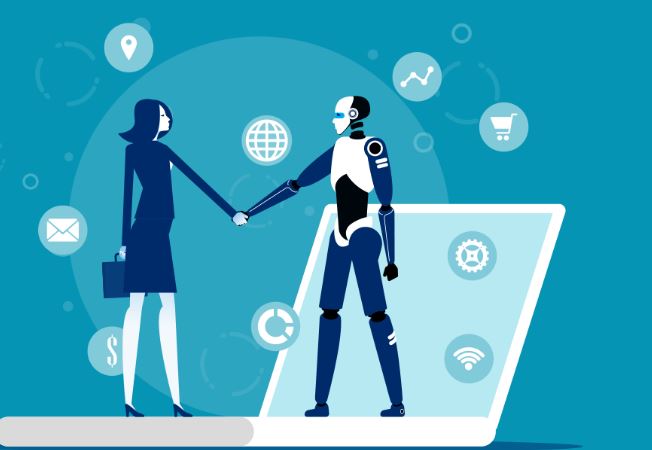Trust in technology is the future
Trust in technology innovation is key to progress in a rapidly developing computerised world. Integrating innovation into our daily lives, from simple gadgets to complex systems that drive global foundations, makes the need for moral, solid, and secure innovation more important. This article examines the future of innovation confidence, analyzing key patterns, challenges, and arrangements that will shape our advanced future.
Trust in Technology is Growing in Importance
Trust in technology innovation is based on a few factors: reliability, security, protection, and moral use. These traits and assumptions change as innovation advances. Any breach of trust could have devastating consequences, given the dependence on innovation in everything from banking to healthcare. Cambridge Analytica, for example, showed the serious ramifications that information abuse can have. It dissolved public trust in computerized stages and ignited a global discussion on data protection.
Trust: The Challenges of Building Trust Few difficulties can ruin the course of events and undermine confidence in innovation.
Cybersecurity Threats
As digital attacks have grown, from ransomware and state-sponsored hacking to the proliferation of modern digital assaults, ensuring the security of computerized systems is a constant battle. Breaks of high profile, such as the Equifax data breach, reveal weaknesses and undermine shopper confidence.
Data Privacy Issues
Tech associations’ unavoidable use and arrangement of personal data raises huge security concerns. Customers increasingly know how their data is used and want more control and transparency.
Ethics
As man-made intelligence (simulated intelligence) and AI(ML) rise, moral questions arise, such as predispositions in calculations, responsibility, and the possibility of work displacement. To maintain trust, it is vital to ensure that artificial intelligence frameworks can be used fairly and straightforwardly.
Emerging Trends Shaping Trust
Despite these challenges, some patterns can guarantee higher trust in innovation.
Advanced Security Measures
Quantum encryption and blockchain technology, among other innovations, can improve how you get information and correspondence. These technologies can provide powerful protection against unapproved access or alteration.
Privacy-Enhancing Technologies
Associative drives that are security-centric, such as differential protection and homomorphic cryptography, allow associations to use information without compromising personal security. These advancements allow information to be viewed and used without revealing individual data.
Ethical AI Development
Recently, there has been a growing emphasis on the morality of creating computer-based intelligent systems. Rules and systems are being developed to ensure honesty, responsibility, and reasonableness. Associations are adopting moral standards for man-made intelligence, such as those proposed by IEEE and the European Commission.
Regulation and Legislation
State administrations are taking steps to enforce stricter guidelines and regulations on information security. The California Buyer Protection Act and the Overall Information Security Guideline in Europe are regulatory efforts to safeguard client information and ensure competent information handling practices.
Building Trust through Responsibility and Transparency
To build and maintain trust in innovation, it is important to be straightstraightforwardponsible. Openness and transparency in organizations’ information practices, safety efforts, and moral principles will help them gain and maintain client trust.
Transparent Data Practices
They can better understand how it is handled by providing clients with clear and open information about their data’s collection, use, sharing, and protection. Organizations can build trust by allowing clients to opt in or out and giving them control over their data.
Ethical Standards & Certifications
Adhering to and embracing moral standards, such as those established by the IEEE or the Organization for Man-made Intelligence, can ensure reliable innovation use. Outsiders and confirmations can also confirm an organization’s moral practices.
Trust in Technology Accountability Mechanisms
By defining responsibility components, such as free supervision sheets, informant security, and simple revealing, organizations can be held accountable for their actions. It can help to prevent misuse and build long-term trust.
Education and Awareness: Their Role
To cultivate trust, educating clients on innovation and its suggestions is essential. More informed clients can make better decisions and protect themselves in an advanced world.
Digital Literacy Programs
Clients can benefit from drives that focus on developing more advanced skills. These drives will help them understand the basics of online security, protection, and innovation. Information empowers clients to explore the digital world better.
Trust in Technology Awareness Campaigns
Crusades to bring awareness about network security dangers, moral intelligence, and information security can help build a more informed and conscious client base. Public awareness can help to drive interest in guidelines and better practices.
Future Outlook: Trust as a competitive advantage
In the future, innovation organizations will gain an advantage through trust. People concerned about security, protection, and morals will be the most active in a crowded market. Customers are likely to gravitate towards brands that they trust. Reliability is a major differentiator.
Trust-Centric Innovation
Those organizations that are developing with trust in mind will likely be the ones to lead. This includes creating products and services focusing on customer security and protection and adopting strategic, straightforward approaches.
Collaborative Efforts
It takes a collective effort to build trust in innovation. For tackling complex problems and creating a reliable computerized biological system, cooperation between states, industries, the academic world, and the common society is vital.
Continuous Improvement
Trust is not static. It requires constant effort and improvement. Organizations must be aware of emerging risks and adapt to changing client expectations. This includes regularly refreshing safety efforts, upgrading security assurances, and refining ethical guidelines.
The conclusion of the article is:
Confidence in innovation will ultimately be a multi-layered and dynamic challenge. All partners must work together to maintain and build trust as innovation continues. We can create a future where trust is at the forefront by focusing on security, protecting, adhering to moral standards, and encouraging honesty and responsibility. A computerized environment that is trusted will not only improve client interactions but also promote cultural development and advancement.
